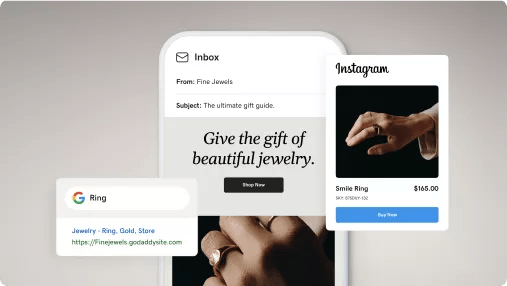Enhance Individual Experience and Drive Traffic With Receptive Web Layout
In today's electronic landscape, where individuals are accessing web sites from a wide range of tools, responsive internet style has actually come to be more vital than ever before. With its capability to adapt and flawlessly adapt to different screen dimensions, responsive style not only boosts individual experience but likewise drives web traffic to your internet site. But why is this design method so crucial? Just how does it increase customer involvement and boost web site web traffic? In this conversation, we will explore the crucial elements of efficient receptive style, look into the very best practices for its execution, and reveal the keys to boosting individual experience while driving even more web traffic to your web site.
Why Responsive Website Design Issues
Responsive internet layout is an important facet of contemporary internet advancement as a result of its capability to make certain ideal customer experience throughout numerous devices and display sizes. With the spreading of mobile phones, tablet computers, and other mobile devices, it has actually ended up being critical for sites to adjust and provide seamless capability despite the gadget being used.
The main reason that receptive web style matters is that it permits users to have a enjoyable and constant searching experience, no matter the device they are utilizing. A receptive website immediately changes its material, format, and style elements to fit the display size and resolution of the tool, guaranteeing that customers can easily interact and navigate with the website without any kind of aggravation or stress.
Furthermore, responsive web style likewise plays a considerable function in search engine optimization (SEO) Internet search engine, such as Google, prioritize web sites that are mobile-friendly and receptive in their search outcomes. By including receptive layout concepts, web sites can enhance their exposure and ranking, resulting in raised natural web traffic and prospective customers.

Boosting Customer Interaction Through Responsive Design
Optimizing individual involvement is a crucial objective of receptive design, as it ensures that individuals can easily access and engage with internet site material on any gadget. With the enhancing use smart devices and tablet computers, it is important for sites to adapt to various screen sizes and resolutions. Receptive design makes it possible for sites to automatically change their layout and web content to offer a seamless customer experience across gadgets.
One of the primary methods responsive layout increases customer involvement is by reducing tons times. With a receptive internet site, individuals do not have to await separate mobile versions to tons, causing faster access to material. This better rate results in higher individual contentment and urges them to invest more time on the website.
In addition, receptive layout enhances customer interaction by boosting navigation and individual interface (Web Design). When an internet site is developed responsively, menus and switches are maximized for touch communications, making it simpler for individuals to interact and browse with the site on their smart phones. This easy to use and user-friendly experience keeps customers engaged and urges them to explore even more of the web site
Furthermore, receptive style permits much better web content presence and readability. By adjusting the design and font style dimensions to various devices, receptive web sites guarantee that users can easily check out and comprehend the content. This boosts user involvement by minimizing the need for zooming or scrolling to read the text.
Boosting Website Traffic With Responsive Internet Design
With the expanding appeal of mobile phones, having a website that view publisher site is responsive to various screen sizes and resolutions is important for driving increased traffic. In today's digital landscape, users are accessing web sites from a range of devices such as smartphones, tablet computers, and desktop. Each of these tools has different screen dimensions and resolutions, and if your website is not made to adjust to these variations, it can cause an inadequate individual experience and a loss of prospective traffic.
Receptive website design makes sure that your web site looks and operates web design design optimally across all devices. By utilizing flexible grids, fluid photos, and media questions, receptive style enables your website to instantly change its navigation, format, and material to fit any kind of screen size. This means that individuals will have a seamless browsing experience no matter of whether they are utilizing a big desktop or a tiny smartphone computer system.
Crucial Element of Reliable Responsive Layout
Reliable responsive design integrates numerous crucial elements that make certain a smooth user experience throughout various gadgets. Among these aspects is adaptable grids and designs. By utilizing relative systems like percents instead of dealt with units like pixels, developers can create designs that adapt and scale to fit various display sizes. This enables material to be displayed in a visually enticing and readable way on any gadget.
An additional important element is media inquiries. These enable designers to apply various designs and formats based on the characteristics of the customer's tool, such as display dimension and orientation. By utilizing media queries, designers can maximize the discussion of web content for each device, guaranteeing that it is quickly available and understandable.
Responsive images are also important in efficient receptive layout. Pictures that are as well big can slow down page load times on smart phones, while pictures that are as well small may show up pixelated on bigger screens. By utilizing techniques such as receptive picture resizing and lazy loading, designers can ensure that images are appropriately sized and optimized for each and every tool.
Last but not least, efficient responsive design involves a mobile-first approach. This suggests making and prioritizing material for smart phones first, and after that increasing and improving the design for larger displays. This technique makes sure that one of the most important web content is conveniently accessible on smaller sized displays, while still offering a rich experience on bigger gadgets.
Best Practices for Implementing Receptive Website Design
Executing responsive internet design calls for cautious factor to consider of various ideal methods to guarantee an ideal user experience throughout various gadgets. When implementing responsive internet style., here are some key best methods to adhere to.
First of all, it is crucial to prioritize mobile customers. With the boosting dominance of smart phones, designing for mobile-first has come to be vital. Start by developing for smaller sized Our site displays and afterwards progressively improve the format for larger displays.

An additional essential best technique is to enhance images for different screen resolutions. Large images can slow down the packing time of your web site, particularly on smart phones with slower links. Usage receptive pictures that can be resized based upon the device's display resolution to improve performance.
In addition, examination your web site on various gadgets and display sizes to ensure a regular and seamless experience. There are numerous screening tools readily available that can help you determine any kind of issues and make necessary modifications.
Last but not least, prioritize functionality and ease of access. Make sure that your internet site is easy to browse, with concise and clear material. Make certain that your website comes to individuals with disabilities and complies with accessibility standards.
Final Thought
In final thought, responsive internet design plays an important role in boosting customer experience and driving website traffic to web sites. By adopting responsive layout concepts, websites can make certain ideal checking out experiences across various devices, leading to boosted user interaction.
Optimizing customer interaction is a vital goal of receptive design, as it makes certain that users can conveniently access and engage with website material on any tool. Responsive layout enables web sites to automatically adjust their design and web content to offer a smooth customer experience across devices.
Furthermore, receptive design enhances individual interaction by boosting navigating and user interface.Responsive pictures are additionally important in effective responsive style. By taking on responsive style concepts, internet sites can guarantee ideal seeing experiences across various devices, leading to boosted individual involvement.